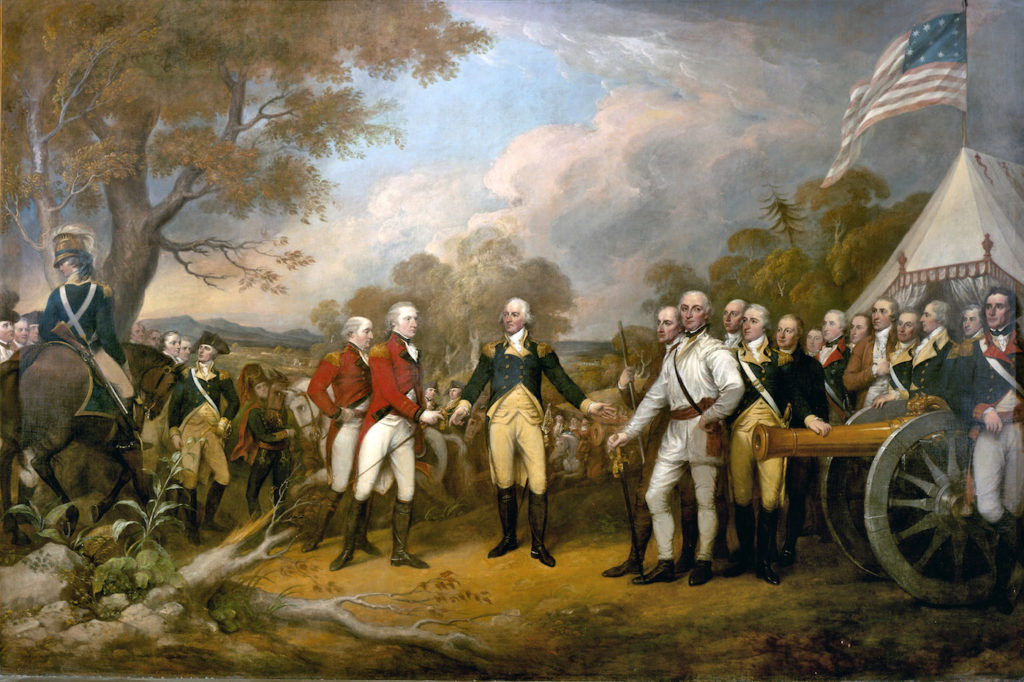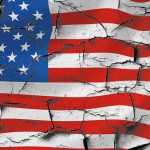When Ellis Sandoz published the definitive collection of early American political sermons with Liberty Fund in 1991, the timing of its appearance—just prior to the militia movement of the 1990s—was fortuitous. Sandoz soon joked that his sermon anthology was a bestseller at gun shows.
Sandoz appreciated that Americans were what President Obama later called “bitter clingers” who held tightly to God with one hand and to a gun with the other. The earliest historians of the American Revolution, David Ramsay and Joseph Galloway, noted something similar when giving reasons for the conflict. The religious roots of the Revolution were emphasized a century later during the Civil War by John Wingate Thornton, Frank Moore, and J.T. Headley, and the idea is reaffirmed today by scholars like James Byrd and Thomas Kidd. A current textbook on the Second Amendment assigned in law schools includes Rev. Jonathan Mayhew’s powerful 1750 sermon on revolution: A Discourse Concerning Unlimited Submission and Non-Resistance to the Higher Powers.
Four new books consider the complicated relationship of religion and politics in Revolutionary America. Each invites us to reexamine the precise role of religion in the conflict. What we must also consider, however, is how well contemporary scholars really understand eighteenth-century Americans.
Christian Nationalism or Christian Unity?
Start your day with Public Discourse
Sign up and get our daily essays sent straight to your inbox.In Unity in Christ and Country: American Presbyterians in the Revolutionary Era, 1758–1801, William Harrison Taylor, associate professor of history at Alabama State University, demonstrates how sectionalism and nationalism in the new republic challenged an entire denomination’s desire to wed patriotism and piety. Presbyterians sought a Christian nation, and they wrestled with what it meant to be a chosen nation and to advance Christian nationalism.
Taylor’s story begins in 1758, when Presbyterians attempted both to heal a twenty-year schism (caused by the Great Awakening) in its own ranks and to build alliances with other denominations. Unity required overlooking some doctrinal differences and respecting the “liberty of conscience” that would be endorsed in the American version of the Westminster Confession (1788). Presbyterians and their Congregationalist partners opposed appointment of an Anglican bishop in America as well as the imposition of taxes during the imperial crisis, but the Revolution that their complaints helped to inspire spurred national soul-searching for repentance and virtue. Sent to quell the rebellion, British commanders cared much less for soul-searching. They recalled the English Civil War and used the occasion to target not only Congregationalists but also Presbyterians, both of whom they considered no different from Puritan opponents of Charles I.
After independence, Presbyterian unification in the South faltered. While pro-slavery Presbyterians forced some compromise from their opponents, Taylor argues that the synod’s 1787 slave policy was not based on fear or racism as such. The tipping point in the South actually came from controversies within the denominational tradition—exclusive psalmody, for example. When post-Revolution revivals sparked controversies over liturgical and theological modifications, many southern Presbyterians, rejecting the national leadership of the General Assembly, formed autonomous local organizations.
Taylor’s account is an important contribution to denominational and American history, but he ignores the Covenanter Presbyterians who insisted on both the abolition of slavery and including Christ in the Constitution. Taylor also carelessly refers to a Presbyterian desire for “Christendom,” but gives no attention to what “Christendom” meant or whether such a thing was even remotely possible in America in the eighteenth century.
Religious Political Rhetoric: Pious or Cynical?
In Pulpit and Nation: Clergymen and the Politics of Revolutionary America, Spencer McBride, editor of the papers of Joseph Smith, suggests a more cynical view of religion’s relationship to politics. McBride argues that political leaders encouraged clergy to “politicize” religious language and symbols in the service of the new nation. But McBride erroneously presupposes that clergy did not engage with large-scale political questions before the Stamp Act Crisis. Even a cursory survey of political sermons (especially colonial wartime sermons) shows that ministers were very much concerned with political matters decades before the imperial crisis and far beyond their parishes. To presume that clergy had no legal or philosophical opinions until given some by revolutionary firebrands is to confuse the clergy of the magisterial Protestant traditions with Anabaptists, Moravians, or Quakers.
McBride presumes that his eighteenth-century subjects shared his own, questionable presumptions about religion and politics. For example, he insists that words and symbols must be either “religious” or “pragmatic.” Religion must “purify” politics or else be “tainted” by it. He casts Benjamin Franklin’s proposal that an image of Israelites crossing the Red Sea become the national seal as a “canny” move by a “deistical Pennsylvanian.” Would McBride cast the same cynical light on Martin Luther King’s use of the symbol? Likewise, he considers Washington’s rule prohibiting profanity among soldiers as insincere, if it was not intended to “honor religion for its own sake.” McBride asserts that “neither the king’s fast day proclamations nor those made by Congress can be viewed simply as religious expressions.” Why must they be either simply religious expressions or simply political expressions? At worst, McBride’s understanding of Christianity is gnostic and otherworldly. At best, it is ahistorical.
Despite some impressive research, McBride reveals a troubling lack of background knowledge: Revolutionary army chaplains (apart from a very few Catholic exceptions) did not administer “last rites” as part of their regular duties, and Presbyterian minister John Joachim Zubly was neither a Lutheran nor an “ordained priest,” as McBride claims. McBride also misunderstands why New England delegates objected to a minister serving as a congressional delegate. He deploys terms like “Enlightenment” or “deist” in a way inappropriate at least since Henry May’s The Enlightenment in America (1976), and he appears unaware of the vast body of Protestant political arguments made in the two centuries before the Revolution.
The Roots of Rights: Reason or Revelation?
Similar shortcomings mar Father of Liberty: Jonathan Mayhew and the Principles of the American Revolution by J. Patrick Mullins, assistant professor of history at Marquette University and protégé of the late Lance Banning.
Mullins’s subject, Jonathan Mayhew, has long been a focal point for scholars of the American Revolution and American political thought. Mullins asserts that Mayhew’s love of liberty depended on “the religious and political ideas of the British Enlightenment” and “natural religion.” What Mullins calls the “sacralization of reason” supposedly enabled “such radical moral abstractions as natural human rights, popular sovereignty, consensual government, and the right of resistance.” Mullins therefore hopes to link a particularly radical approach to reason and revelation with a particularly radical approach to politics.
However, this argument presumes that the Reformed Protestant tradition was exclusively biblicist and eschewed reason. One does not have to look far for evidence to the contrary: consider Calvin’s praise of reason in Book 2 of his Institutes (“reason is competent to govern man in temporal things, including political matters”), the Canons of Dort, or Heinrich Bullinger’s Second Helvetic Confession. Puritans and Reformed scholastics commonly appealed to reason, natural religion, and civic virtue—as Wallace Marshall and Stephen Wolfe have recently shown. Given this larger context, Mullins’s central thesis is unconvincing.
This alleged zero-sum game between reason and revelation is not only inconsistent with the Reformed tradition that birthed Mayhew’s Congregationalism, it ignores how the American Enlightenment accommodated diverse views that we might think inconsistent but that eighteenth-century intellectuals did not. Consider, for example, Cotton Mather’s regular and fearless use of John Locke in his Biblia Americana. When presented in the larger context of Anglo-American Protestant political thought, it is not evident that theological liberalism was sufficient or even necessary for a particular kind of political thinking. Furthermore, Mayhew’s concern for “secular” rights and liberties (especially in the French and Indian War) was hardly unique to himself. Ministers had expressed such concerns at least since the colonial wars of the 1740s.
Theological liberalism like Mayhew’s was not prerequisite for resistance: revolution was already dialed up to eleven in the regicide of Charles I, celebrated by Mayhew in 1750. Mayhew’s rhetoric, like that of other ministers, is indeed Lockean, but he did not need what Bernard Bailyn called “the Lockeanism of St. Paul” to argue for resistance or disobedience. Justification for both had already been synthesized from secular and sacred sources by Marian exiles, French Huguenots, Scottish Presbyterians, and New England Puritans in the previous century.
Two centuries of argument demonstrate not a sacred-secular dichotomy but a cooperative defense of law, liberty, and virtue. Mullins seems to recognize as much when he says that “New England Congregational Clergy took the right of resistance for granted.” Unfortunately, he then asserts Mayhew to be at the center of a “cultural change.” Mayhew was certainly a firebrand, but he should not be confused with Prometheus.
Evangelicalism or Enlightenment?
John Oakes, former fellow at both Yale and Harvard, exemplifies a more persuasive and precise approach to the interplay of religion and politics in Conservative Revolutionaries: Transformation and Tradition in the Religious and Political Thought of Charles Chauncy and Jonathan Mayhew. In a close study of both Mayhew and Rev. Charles Chauncy, Oakes situates their work amid their contemporaries and demonstrates that Mayhew and Chauncy were moderates, not radicals. Both men justified their opinions from scripture and occasionally even from Church Fathers; they held a Christocentric theology and emphasized personal righteousness; they opposed episcopacy and Roman Catholicism. Furthermore, both retained many traditional political opinions even during the imperial crisis: appreciation for social hierarchy (“natural order”), monarchy, and British constitutionalism. Their eventual arguments for resistance deployed traditional constitutional and theological reasoning, and neither was eager to reject imperial authority as such. They maintained a providentialist (rather than a deistic) understanding of warfare and political affairs generally.
Insofar as Chauncy and Mayhew were heterodox (for example, Mayhew came to embrace subordinationist Christology, and Chauncy became a universalist), Oakes argues that radical theological positions were in no way catalysts for particular political positions. Contra Mullins, Oakes argues, “Mayhew’s understanding of spiritual liberty had little to do with later notions of personal freedom ‘as an individual right.’ It had more to do with the traditional Puritan one which . . . John Winthrop described.”
Contra McBride, Oakes also rejects any suggestion of a secular vs. sacred or religious vs. political dichotomy in either minister. Oakes’s most important case study for this concerns Mayhew’s and Chauncy’s ambivalent and ambiguous use of the term “liberty.” Though both cast natural liberty in Lockean terms, their understanding of civil liberty and its relationship to spiritual liberty was both nuanced and complex. Chauncy and Mayhew therefore serve as proof not of a split between evangelicalism and the Enlightenment, but as evidence of their compatibility in late eighteenth-century America.
False Choices
Ramsay and Galloway and subsequent generations of historians got it right: religion played an essential role in the politics of the American Revolution. However, eighteenth-century ministers and statesmen were not obliged to choose between pragmatism or piety, orthodoxy or heterodoxy, reason or revelation. We should not force our subjects to choose sides simply because we are too attached to the artificial and inappropriate categories of modern scholarship. Instead, we should do our best to understand the worldview of eighteenth-century Americans.













